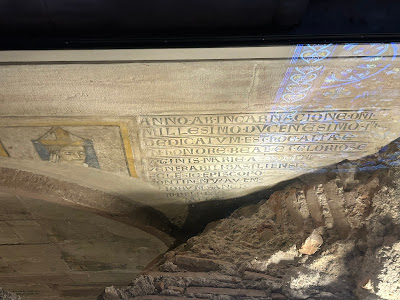New Home 3.0 is a fascinating microstudy in changing a city's nature, building, and the future of home developments.
Located in a greater metropolitan area but somewhat separated from it, it had the good fortune to start out as its own city (instead of an incorporated suburb) and so has an identity all its own. One can find a small original downtown (which is well preserved and cared for), the inevitable next wave of growth of strip malls and big box stores, and the final expansion along the state highway which connects us to the larger urban area and is itself another zone for big box stores and major chains.
And yet, we are within 10 minutes of wide tracts of actively used agricultural land and small old agricultural towns that have not fully "made the transition" to a thriving city and so live with lesser well preserved downtowns and suburbs surrounding the historic town.
Add to this, then, the phenomena of large acreages being sold and housing developments being put in place.
To those that may not have seen them lately, housing developments are becoming less and less attractive. Even 20 years ago, within a development there was some element of difference between the homes; one had 3-5 models to choose from and these were alternated on the lots. Those days have passed: the new housing developments are packed in (the so called "Zero-lot line", where there is minimal or no room between one's self and one's neighbor), minimal yards front and back, and the houses all appear precisely the same with only a difference in home colour to show a difference. There are no trees in the back as you drive by, only yards and yards of fences with backs of houses staring at you as you drive by.
The building continues apace. And yet, I wonder how long and what worth these will have.
While the economy may be booming in some areas, it is arguably not booming in New Home 3.0. Some of the major employers have announced significant layoffs and given the state of what they make and the world, I scarcely think these are the last layoffs they will have. These are precisely the jobs that are required to purchase a home here where $500,000 is the current low level for a home for sale - e.g., the market seems primed to be dropping off and in a big way.
The other thing that makes me wonder is the long term value. Having at one time owned a house that was done by a commercial builder, I know quite well the quality of their construction, which can be "iffy' at best. After all, when is building houses like an assembly line, "quality" may not be the biggest concern. Speed in finishing them is.
Certainly it is not a problem now. But 20 years from now? There are going to be hundreds of homes that will have the same range of issues. Add to that a market which is seems to be changing, and I see the potential for whole areas of aging homes in states of disrepair and a limited buyers market as the "good" jobs disappear.
Is there a solution? It is easy enough to say "Build less homes" (and I, as someone who sees the value in land not built on would completely agree with), but that does negate the right of the individual to do what they will with what they own. Could cities also target their building towards already "built out" parts of town that need renewal? Yes, but then one runs the complaints of "gentrification". And all of this assumes an ever increasing populations with an income to afford them.
Likely this problem will not manifest directly for us; with some level of planning we will have a house in the not too distant future which will more or less be the one we keep until circumstances intervene. But it does make me wonder, as I drive by clone after clone behind newly raised fencing, what it will look like in 20 years.








